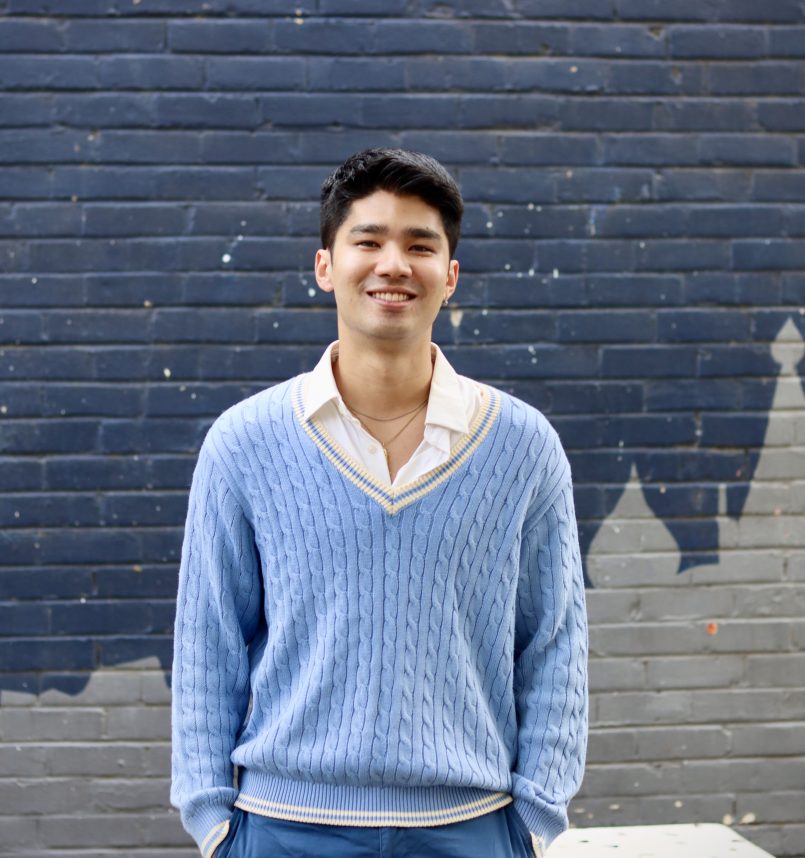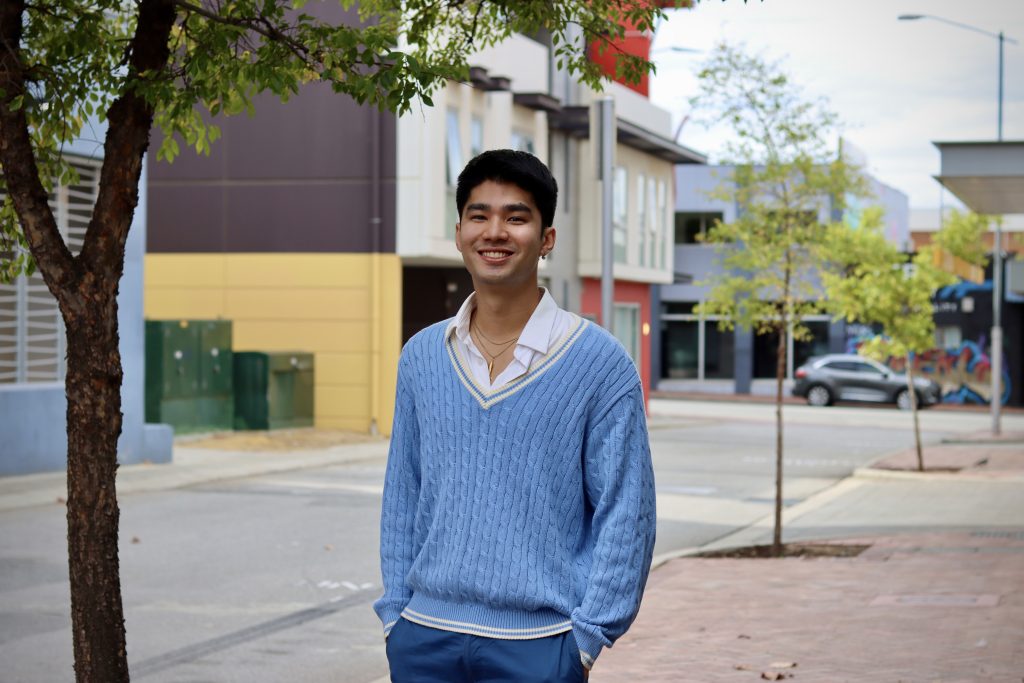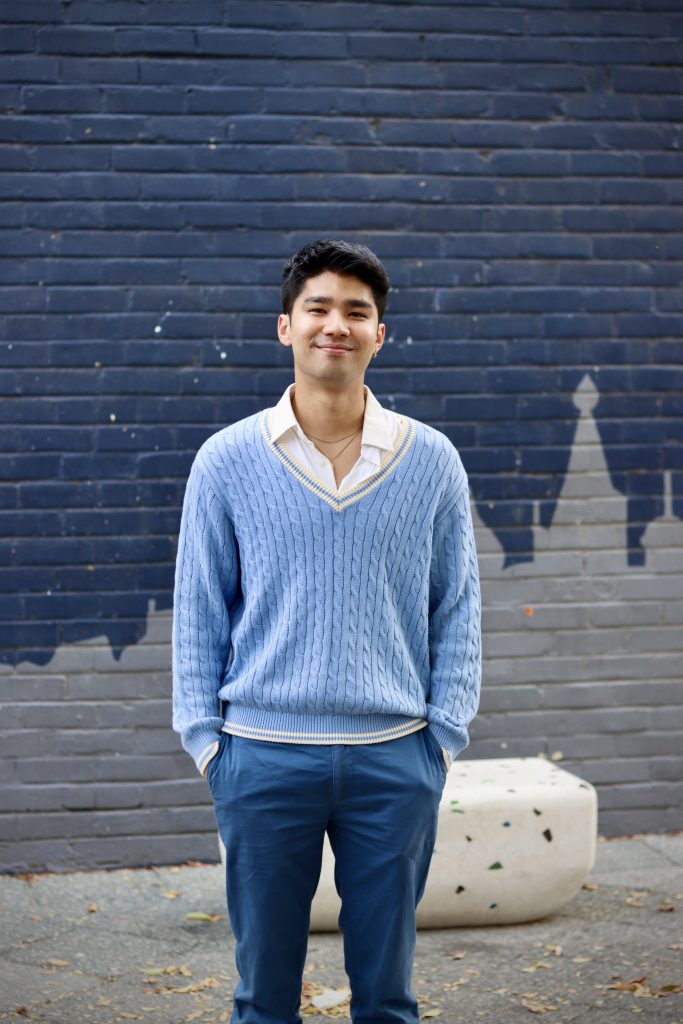Radheya Jegatheva
“I’m so impressed by what the students come up with, and it’s lovely to see them flourish when they are given the space and freedom to express their creativity.”

Storybound is an interview series with people who have helped shape the Centre for Stories into what it is today. This series explores what it means to connect with people in our community who are captivated by stories.
Radheya Jegatheva is an award-winning writer/director/filmmaker from Perth, Western Australia. Radheya is passionate about film, and the value of using film and animation in educational and social development contexts. He has spoken to thousands of school students over the years with an aim to encourage young people about being involved in the arts.
Centre for Stories: What is your favourite way to consume stories?
Radheya Jegatheva: My favourite way to consume stories is by listening to them, so I listen to a lot of audiobooks and podcasts to get my fix. There’s something special about oral storytelling, hearing a story being told to you. It allows me to listen to stories while I’m doing other things – driving, washing dishes, going to sleep. When I was little my mom prepared a little CD player set up next to my bed, and as I was lying in bed I’d listen to children’s audiobooks – so my love for it originated from there, I suppose!

CFS: What are you currently reading/watching/listening?
RJ: I recently listened to an amazing collection of tales in ‘Never Whistle at Night: An Indigenous Dark Fiction Anthology’, they were so captivating and well-written. I’m also currently watching the animated series ‘Blue Eye Samurai.’
CFS: What have you been doing to get involved in the writing community?
RJ: I’ve attended a few events held at the Centre for Stories and the Westerly magazine launch where I had the pleasure of listening to some great poetry. I could certainly be more involved – I’m more in the filmmaking space.
CFS: Who would you like to collaborate with in future?
RJ: There are some great friends of mine in the creative spaces who I’ve been wanting to collaborate with. One is Kailani D’Amour, an amazing writer/director/all-round talent based in Brisbane – we met overseas at a film festival several years ago and we’ve been in touch since! We’ve talked about co-writing and co-directing something together one day. There’s also my wonderful best friend Luisa Mitchell, we’ve luckily managed to work together on a few different projects but the first and last time we co-wrote something was a few years back in university. Would be awesome to write another screenplay together in the future.

CFS: What is the best advice you could give or that you have received?
RJ: This is not direct advice that I’ve received but rather a quote which I saw on a motivational flip calendar in my bathroom. I’m someone who worries and over thinks a lot, especially about the future. I often spend a lot of time ruminating and obsessing over things that are out of my control. The quote was from Alan Kay, and it said “The best way to predict the future is to invent it.” In hindsight, given that he’s a computer scientist, my understanding is that the context of his quote was more directed towards global innovation and technological advances of the future. When I first read it, my takeaway was more at a personal level – to create my own future by channeling my energy into appropriate pathways. It was really quite comforting to me.
CFS: How do you feel you have contributed to building/maintaining creative spaces?
RJ: I think my contributions are largely focused around the educational sector. I’ve given talks at a number of schools and universities about my creative journey and a brief intro into filmmaking. Some of my films have been used as educational tools around the world, and it’s amazing to see when your work connects with some of the students. I started creating films on the side when I was in school, and I think young people having encouragement and support in the creative fields is so important. I’ve also been delivering the Write Up program through the Centre for Stories, which focuses on creative writing and storytelling in schools – I’m so impressed by what the students come up with, and it’s lovely to see them flourish when they are given the space and freedom to express their creativity.

CFS: Could you give us some insight into how you got involved in film?
RJ: I’ve always loved watching films, but my passion for filmmaking really came through when I was around 10-12 years old and would start trying to make little films of my own. Often I wouldn’t have any actors so I would set up my available camera (my iPod touch or dad’s MacBook Air) and film myself in the different shots I needed, use crappy green screen effects and mash it up together in Windows Movie Maker and iMovie. Before this, my brother and I would also spend hours in this animation software where you essentially are animating stick figures, and we’d create these elaborate action scenes where they’d be jumping around and fighting each other (similar to what my brother and I did in real life anyway). I was enthralled by VFX and would also explore that side of things, which led to me learning how to use animation software, and my love of storytelling led me to use those programs to create short films. As for finding inspiration – I try to find ways to meld separate concepts that are swimming around in my head together into something cohesive and meaningful. I might also revisit my old notes and plans that I’ve been sitting on, and I used to adapt short stories I’d written in high school. Now, I’ve got a lot of ideas, plans, and screenplays I’ve written, so now it’s about finding the time to actually put them into production.
Radheya Jegatheva is an award-winning writer / director / filmmaker from Perth, Western Australia. Radheya is passionate about film, and the value of using film and animation in educational and social development contexts. He has spoken to thousands of school students over the years with an aim to encourage young people about being involved in the arts. He has also animated and contributed to various large-scale multimedia installations and public projects, and performed animation and VFX work on Lynette Wallworth’s ‘How to Live…’ which premiered at the Sundance Film Festival.
At Centre for Stories, we are captivated by stories. This state of being deeply immersed in the world of a story is something not unique to us, but a feeling many writers, facilitators, practitioners, and educators experience when connecting to stories and communities. ‘Storybound’ is an interview series with people who have helped shape the Centre for Stories into what it is today. This series explores what it means to connect with people who are as storybound as we are.
Copyright © 2024 Radheya Jegatheva.
These stories have been licensed to Centre for Stories by the storyteller. For reproduction and distribution of these stories, please contact Centre for Stories.
This interview was published in 2024.